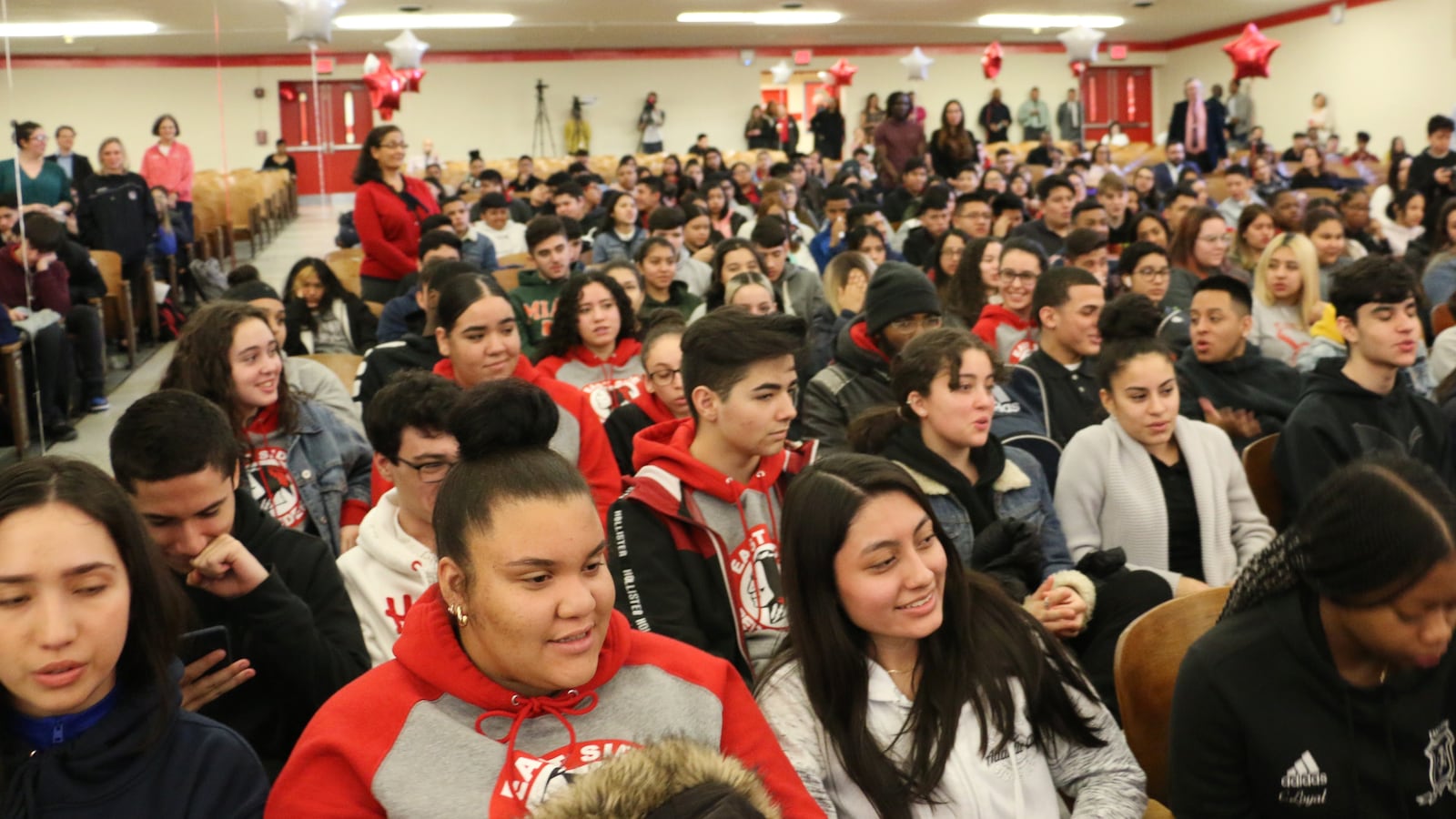Newark Public Schools is looking for a new crop of talented, diverse teachers — and it’s turning to its high school classrooms to find them.
The district on Tuesday announced plans to embed a new academy inside the city’s largest high school, where teenagers will take college-level education courses and practice teaching in local classrooms. Superintendent Roger León promised to offer a job in the city’s schools to any student who completes the program and, after college, becomes a certified teacher.
“You do everything you’re supposed to, this school district hands you $50,000,” León told students at East Side High School, where the program will begin next year.
Montclair State University will help write the curriculum and provide adjunct professors to teach the East Side students, who will be able to earn college credits through the program. The state recently awarded Montclair State and Rutgers University a $750,000 grant to help recruit and train aspiring teachers of color to work in high-needs districts, as part of a statewide effort to diversify the teaching force.
The American Federation of Teachers, the nation’s second largest teachers union, and the Newark Teachers Union will also support the new academy. University High School, a selective district school with its own teacher-training program, will provide guidance.
The program reflects a push by León to revamp vocational education in the district, which in recent years has focused almost exclusively on preparing students for college rather than the workplace. His plan is to restore career-focused academies inside each of the district’s six traditional high schools so students will eventually be able to graduate with credentials in industries ranging from health services and engineering to public safety.
“Today represents the beginning of a new chapter for our high schools,” León said, calling East Side’s new program “the first in a series of high school academies that will connect Newark Public School students to promising futures.”
The effort to steer Newark students into teaching comes amid a growing recognition, nationally and in New Jersey, that students benefit academically from teachers who look like them. In Newark, about 57 percent of teachers last school year were black or Hispanic, compared to more than 89 percent of students. (About three-quarters of Newark teachers are women.) Studies have found advantages for all students who have teachers of different racial and ethnic backgrounds. Black students in particular appear to benefit academically and socially from having black teachers.
Details are still being worked out for the program at East Side, a diverse school with some 2,000 students in Newark’s Ironbound neighborhood. But the plan is for students who are interested in teaching to observe classrooms at local public schools their sophomore year, then take education-related courses, and begin student-teaching their junior year, said Brian Klasner, East Side’s director of innovative academies. Students will be able to concentrate in arts, bilingual, or special education.
A mix of East Side faculty members and Montclair State professors will teach the courses, allowing students to earn up to 30 or so college credits by graduation, officials said — not enough for a two-year degree, but still a head start for college. Students who complete the program will receive substitute-teacher certificates, giving them an immediate job prospect if they choose to work during or instead of college.
Genesis Chevez, a senior at East Side, participates in an internship program that lets her work with students with disabilities at a school in Newark’s North Ward. She said the new academy will give students an even more robust exposure to both the theory and practice of teaching, helping them decide whether that field is right for them.
“I really wish I had this opportunity when I was an underclassman,” she said.
A handful of districts across the country, among them New York City, host programs that let high schoolers learn about and practice teaching. The American Federation of Teachers has touted such efforts as one way for districts to develop a pipeline of future teachers who better reflect the students they serve.
“We need to have a whole lot more teachers who are men and a whole lot more teachers who are of color,” said AFT President Randi Weingarten. She added that programs like Newark’s can also inspire more students to enter the profession at a time when enrollment in teacher-prep programs is declining.
East Side’s teaching academy is expected to begin sometime in 2020. León said the new academies at the other high schools will launch either this fall or in fall 2020, depending partly on whether their facilities need to be upgraded.


